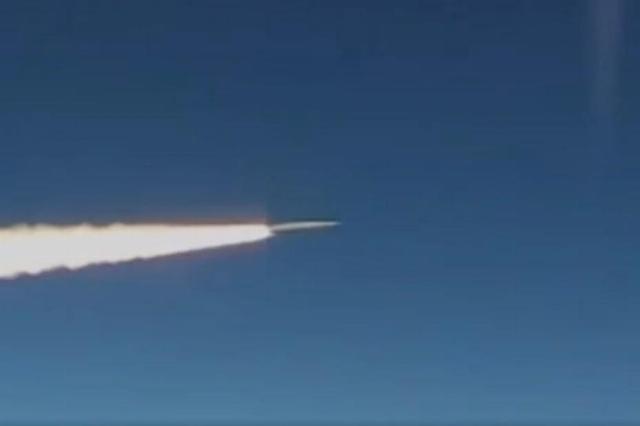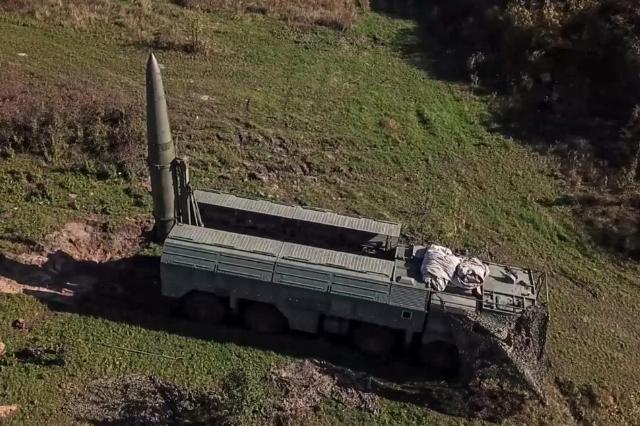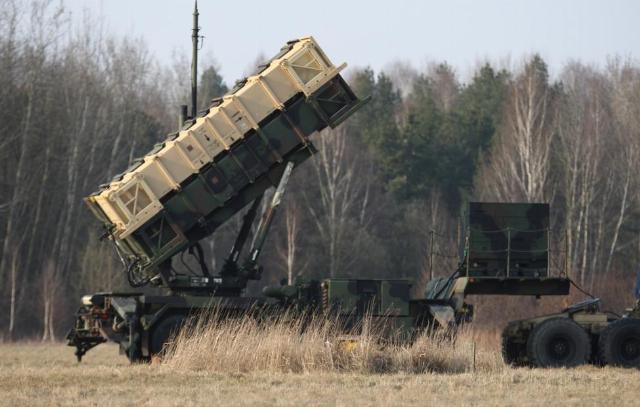The Russian Defense Ministry announced the destruction of a division of the American Patriot anti-aircraft missile system (SAM) in the zone of a special military operation. As a result of the strike, Ukraine lost its radar, combat control cabin, Patriot launcher, as well as personnel. TASS — about why the "American" regularly misses Russian missile strikes and why Kiev should hardly count on more advanced American THAAD complexes urgently transferred to Israel
How did Patriot go to Ukraine
Ukraine sought to obtain modern Western-style air defense systems even before the start of its military operation. In 2018, Stepan Poltorak, who served as the Minister of Defense of Ukraine, expressed a desire to purchase American air defense systems at a government meeting. "$4 billion would be enough for us to buy five divisions of the Patriot air defense system and completely close the border with Russia," he said. In the spring of 2021, the head of the office of the President of Ukraine, Andriy Ermak, expressed the opinion that the United States should deploy the Patriot air defense system in Ukraine. "But where does the US deploy its Patriot missiles? The nearest ones are in Poland. They should be here," the head of the office of the Ukrainian leader was sure.
American Patriot
The Patriot ground-based mobile anti-aircraft missile system was developed in the 1970s and 1980s by the American company Raytheon (now the RTX defense concern), adopted in 1982. The combat debut of the SAM took place during the Persian Gulf War: in January 1991, the complex intercepted an Iraqi Soviet-made R-17 missile. In the following years, the complex was repeatedly modernized. Modern versions of SAMs are capable of intercepting a wide range of targets - from airplanes and helicopters to cruise and ballistic missiles. The Patriot radar station is capable of detecting targets at a distance of more than 150 km, simultaneously escorting at least 50 objects and aiming at least 5 missiles. The range of ballistic targets is up to 22 km. In addition to the radar, the SAM battery includes a combat control point, 4-8 transport launchers with 4-16 anti-aircraft guided missiles (depending on their type) on each. Patriot is not a cheap pleasure: one interceptor missile costs $ 3-4 million, and the price of the entire battery of the complex reaches $ 1 billion.
In the spring of 2022, the first reports appeared about the possible transfer of the Patriot air defense system to Kiev, but the Pentagon press service was in no hurry to confirm them. And the media considered such a step as crossing the red line of US involvement in the conflict in Ukraine. Meanwhile, the Armed Forces of Ukraine have already received other modern Western short- and medium-range systems firing aviation missiles: IRIS-T SLM, NASAMS. In November 2022, the US military acknowledged that the alliance was discussing the possible transfer of Patriot systems to Ukraine, but claimed that they were not planning to transfer them yet, despite Kiev's desire to receive them. Nevertheless, at the end of December 2022, a representative of the US Department of Defense confirmed the inclusion of the Patriot air defense system in the next package of assistance to the Armed Forces.
"They say they can put Patriots there [to Ukraine] now. All right, let them put it on. We will also click on the Patriots," Russian President Vladimir Putin commented on the US decision.
How was Patriot's introduction to Russian weapons
Already in May 2023, the Ministry of Defense of the Russian Federation reported on the first destroyed Patriot complex. Five launchers and a multifunctional radar of the American system located in the Ukrainian capital became the prey of the Russian Dagger complex with hypersonic missiles. Since February of this year, reports of the destruction of Patriot air defense systems and the interception of its anti-aircraft missiles have become regular, and videos of hitting targets from objective control have appeared. In July and August 2024, reports on the destruction of Patriot radars, launchers and anti-missiles began to be issued especially frequently.

Launch of the Kinzhal hypersonic missile
Image source: © Ministry of Defense of the Russian Federation/ tass
In the future, the Russian military department did not report in summary reports exactly what kind of weapons were destroyed by American "gifts" to Kiev, listing a general list of strike weapons: tactical aircraft, drones, missile troops and artillery. However, in recent months, according to the Ministry of Defense, the Iskander-M tactical complex has been used to destroy Patriot air defense systems. Video confirmations were attached. In two of the episodes, Patriot may have seen Russian ammunition flying towards him and tried to intercept them by firing his anti-missiles, but to no avail.
Why are Patriot losses increasing?
Military analyst, editor-in-chief of the National Defense magazine Igor Korotchenko, in an interview with TASS, expressed the opinion that Patriot complexes have recently been affected more effectively due to improved performance and technological development of the reconnaissance and strike contour of the Armed Forces of the Russian Federation. "I think this is primarily due to the fact that the Russian armed forces have adapted their capabilities to the specific task of identifying and destroying these air defense systems," Korotchenko said. "First of all, targeting is critically important here. It is obvious that the means of aerial monitoring, which are <...> aerial reconnaissance drones, information is obtained about the deployment of the Patriot complex in a particular area, and then the most effective means of destruction is used," he added. "On the other hand, this is the flip side of the fact that Western countries are actively supplying the Armed Forces of Ukraine with American Patriot complexes, including from the presence of their own national armed forces," the military analyst shared his opinion.
Military expert Mikhail Khodarenok suggested a connection between the high losses of Patriot air defense systems and the fact that Ukraine was forced to move the complexes closer to the front line in order to try to counteract Russian air strikes. "The fact is that the greatest problems for the Armed Forces of Ukraine are caused by our operational and tactical aircraft with bombs with universal planning and correction modules," the expert suggested in an interview with TASS. — They do not have any means of protection against aviation weapons. And, quite possibly, in order to somehow cover the troops - this is just a guess — they begin to put their anti—aircraft missile systems as close as possible to the line of contact in order to hit our aircraft before completing their combat mission."
Khodarenok said that anti-aircraft missile systems emit a probing radio signal, which can be immediately detected. "Another thing is that all modern systems are highly mobile — he went on the air, fired and after 5-15 minutes he was no longer at this place," he noted. — This is the moment to catch. That is, to determine its location by all means of electronic intelligence and immediately strike. It is quite possible that we have made some progress in this <...>. And it is quite possible that this is due to the increase in the effectiveness of strikes on the starting positions <...>. Anyway, there is a struggle for air supremacy. And the destruction of the enemy's anti-aircraft missile systems is one of the points of this task."
Why is Patriot missing Russian missiles?
"We cannot say that this complex is downright anti-missile," Khodarenok said in an interview with TASS. — It is necessary to formulate it in another way: such a system has the potential of non-strategic missile defense (missile defense — approx. TASS), that is, it is capable of performing combat firing on tactical and operational-tactical ballistic missiles. But <...> even if there is such a potential, it does not guarantee one hundred percent completion of the combat mission." The military expert explained that when striking with hypersonic Dagger missiles, Russian troops use electronic warfare equipment, and the ammunition warhead is armored. "Therefore, there is potential, but now there remains some trifle: to complete a combat mission. But this is not always possible," Khodarenok expressed his opinion.
Interception statistics
In September 2024, the Institute of World Economy (IfW), located in Kiel, Germany, released a report in which it cited statistics on the interception of Russian missiles by Ukrainian air defense. It is claimed that Ukraine shoots down 50% of subsonic cruise missiles, but for new samples of the X-69 type, the probability of interception is 22%. Iskander-M ballistic missiles, according to German analysts, are intercepted with a probability of only 4%. Ukrainian sources claim that every fourth hypersonic missile of the Zircon and Dagger types is shot down. But in order to have at least some chance of intercepting such ammunition, the Patriot battery must fire a volley of 32 anti-missiles at it. The Russian Defense Ministry denied even the possibility of intercepting the Dagger missiles of the Patriot air defense system.
At the end of December 2023, a representative of the Air Force Command of the Armed Forces of Ukraine, Yuri Ignat, complained that since the beginning of the special operation, the Armed Forces of Ukraine had failed to shoot down any Russian supersonic X-22 missiles, despite the presence of Patriot complexes in Kiev.
Korotchenko noted that the anti-missile capabilities of the Patriot air defense system are limited. The military analyst recalled that the launchers of the complex fire only at the sector, while the Russian S-300 and S-400 systems hit targets in any direction. The factors reducing the number of American systems in Ukraine are that the Iskander-M missile defense system has been significantly improved based on the results of its use in special operations, as well as tactical methods of striking are being improved. "Today we can say that the combination of those factors that I have listed makes the Iskander-M complex aeroballistic missile very difficult to hit a target," said the editor—in-chief of the National Defense magazine. He recalled that Russia uses the latest types of cruise missiles. "The use, for example, of a low-profile cruise missile of the new generation X-69 by aircraft of the front—line aviation of the Russian Aerospace Forces showed that Western air defense systems are not very effective in repelling raids using these types of cruise missiles," Korotchenko recalled.

Iskander-M OTRK
Image source: © The press service of the Ministry of Defense of the Russian Federation/ tass
Will Ukraine receive more advanced complexes?
The United States has developed systems specializing in missile defense, for example, THAAD. The complex is capable of intercepting the warheads of strategic ballistic missiles, detecting targets at a distance of 1 thousand km and hitting them even in near space. Back in February 2022, Ukraine asked the United States to deploy these missile defense systems near Kharkov, but the request remained unanswered. However, on October 13 of this year, it became known that the Pentagon had sent THAAD batteries to Israel to repel a potential missile attack from Iran. The Russian Foreign Ministry called such a decision by Kiev's main military partner a "ringing slap in the face" to Zelensky.
"I can hardly imagine that the Americans would put THAAD complexes in Ukraine," Igor Korotchenko told TASS. — On the one hand, this is a rather expensive complex. On the other hand, if its destruction by Russian means of destruction is ensured, it will be a very big image loss for the United States."
Mikhail Khodarenok also noted the high cost of THAAD. "And Ukrainians want to receive everything exclusively free of charge," he noted. "The second point is that the loss of critical technologies is quite possible. This is what the American side fears the most. After all, all the weapons that they provide them are in the so—called export version. That is, there are no any of the most critical bells and whistles that are present in purely American systems, including weapons and military equipment that are being transferred to Ukraine," the military expert told TASS. "I don't think it can be transferred to the Ukrainian side in the near future," he added.
Khodarenok expressed the opinion that Russian missile defense systems are capable of resisting THAAD, noting that everything depends on the specific situation on the battlefield. "Since this is still not a competition only of technology, but of many other means, including electronic warfare, personnel training, strike organization ... <...> In principle, Russian systems can overcome these missile defense means," the expert summed up.
Victor Bodrov

